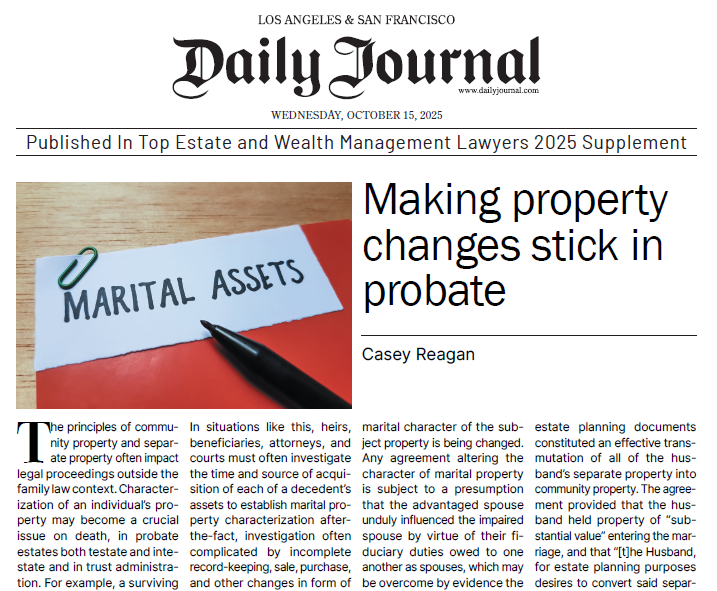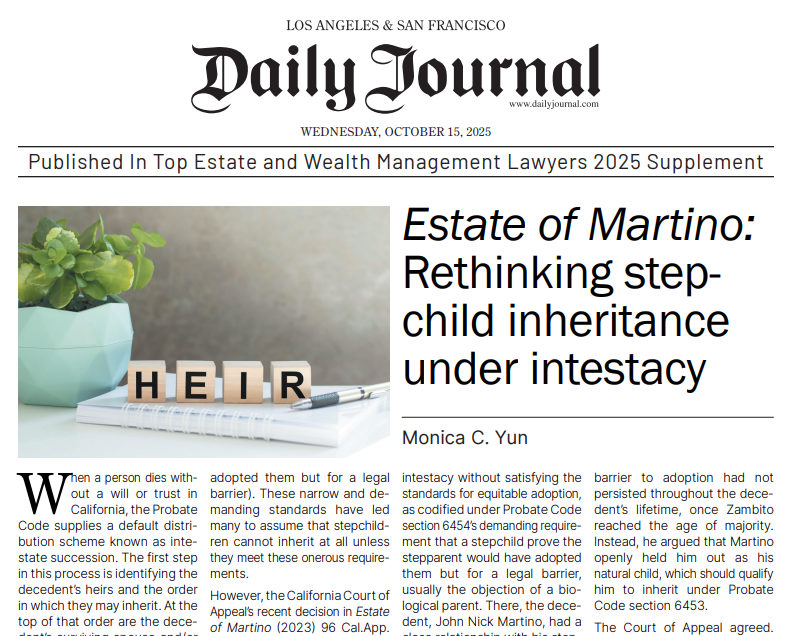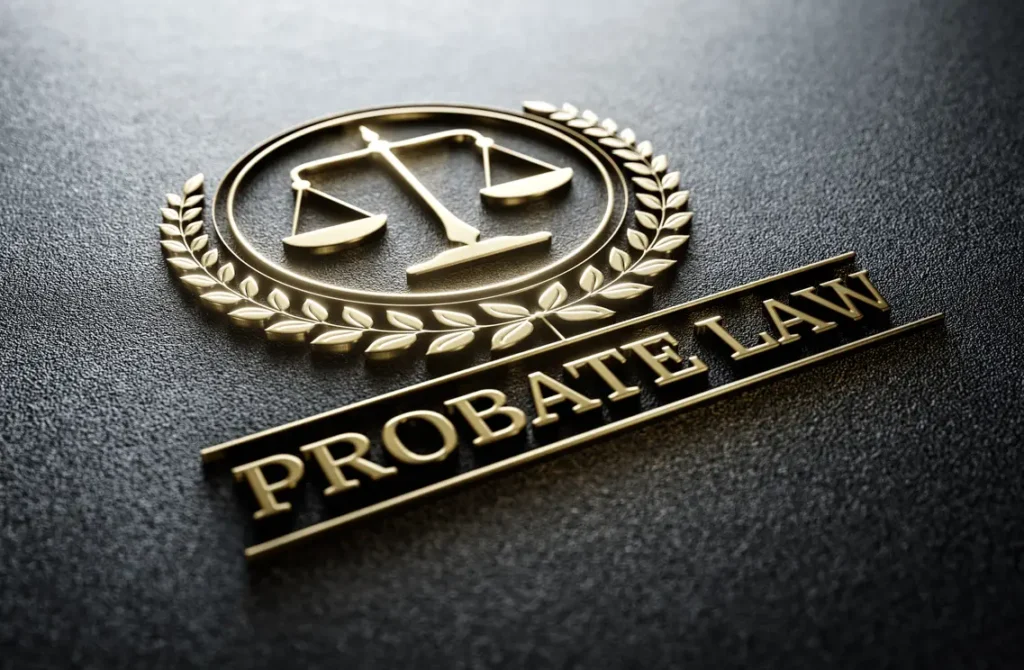
Senior Associate Casey Reagan authored a new article for the Daily Journal’s inaugural Trusts & Estates supplement, spotlighting the appellate decision in In re Marriage of Lund and its implications for estate planning. The case confirms that a properly drafted and executed agreement—especially one tied to joint estate planning documents—can effectively transmute separate property into community property. This distinction is critical, as mischaracterization of marital property can drastically alter inheritance outcomes, spark costly probate litigation, and complicate trust administration.
Reagan’s article underscores why attorneys must understand the evidentiary standards, drafting nuances, and fiduciary implications surrounding transmutation. When done correctly, transmutation offers clarity and control over asset disposition—but when mishandled, it can unravel estate plans and trigger disputes.





